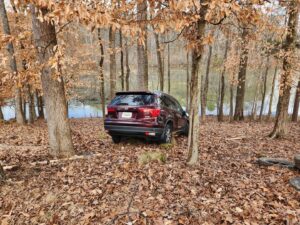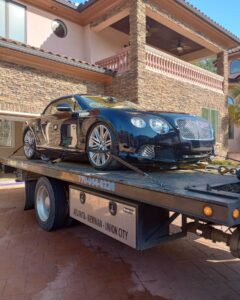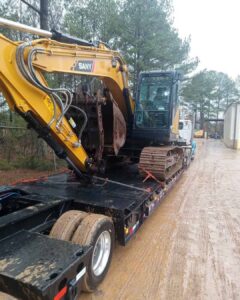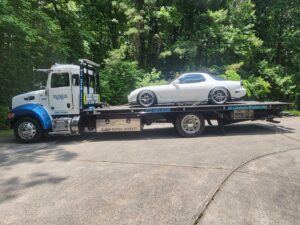Tips to Teach Your Student Driver
According to the CDC, teen drivers between the ages of 16 and 19 are at a greater risk of being in an accident than any other age group. Sadly, this age group is also three times more likely to end up in a fatal crash than drivers over 20. As a wrecker service, our team at Southside Wrecker has witnessed the aftermath of far too many wrecks involving teenagers. Being proactive with preparing teenage drivers for the road could protect both them and the other motorists on the road. We have compiled some of our best tips to help prepare your student drivers for the test, and more importantly for the road.
Before Hitting the Road
- Check Your Insurance Coverage–Whether your new driver is a natural at the wheel or not, anyone can get into a fender bender, so it’s always best to be prepared. Having your car fully covered will bring you peace of mind. If you are unsure about your current coverage for your learning driver, reach out to your agent before you start teaching your teenager.
- Make Sure Your Car is Ready–Check to make sure that your car is up to date on all of its maintenance, including oil changes. Be certain that there are no warning lights on and the tires are properly inflated. Proper maintenance will reduce the chances of a breakdown or mechanical failure while your new driver is practicing. Because breakdowns can be frightening for inexperienced drivers, it is wise to minimize the chances of this happening.
Driving Teaching Tips
- Start With The Basics–Even if it seems too simple, start by reminding your student driver where all of the controls are, including the lights, turn signals, gear shift, windshield wipers, etc. Instruct your student to place their hands on the steering wheel at 9 o’clock and 3 o’clock. This hand position will allow for maximum rotation with minimal effort, which means that they will have greater control. Encourage your teenager to keep their arms relaxed because they will have better control. Relaxed muscles can respond much quicker than tense ones.
- Remind Them About Distracted Driving– Around 3,000 drivers are killed each year due to distracted driving. Teenagers are notorious for distracted driving, largely because of cell phone usage. Based on a study from Carnegie Mellon University, using a phone while driving takes away 37% of a driver’s brain power— 37% of energy and focus that could be devoted to driving safely . Although every driver should be focused on the road, inexperienced drivers especially need to be completely focused on their driving. Encourage your student to leave their phone alone until they arrive safely at their destination. Did you know that in most states, using a phone while driving is either limited to hands-free or prohibited? Distracted driving is often connected to cell phone use, but that is not the only way to drive distracted. Teach your student to avoid doing things that take their eyes off the road or hands off the wheel, such as eating, drinking, putting on makeup, changing the radio, etc.
- Start in a Safe Spot–Choose a quiet residential street or a parking lot for the first few driving lessons. We recommend starting slowly: have them turn the car on and off, put the car in gear, and move a few feet forward and brake. After the student is comfortable, you can practice turning, reversing, and parking. Practicing these skills in various weather conditions would be wise, so they know how the car responds in wet, dry, and icy conditions. Make sure you always give clear step-by-step instructions so your teenager knows what to do. For example, if you are preparing them to stop at a light, instruct them to ease off the accelerator, gently press the brake until they stop, and hold the brake until the light changes. Practicing the basics in a parking lot or on a quiet street will allow your teenager to make mistakes safely, giving you the perfect opportunity to help them adjust and learn.
- Add Small Challenges– After your student is comfortable in a parking lot or on a quiet street, guide them onto a road with other vehicles and/or multiple lanes. Have them practice lane changes and safely turning onto other streets. Save highway or interstate driving until they are comfortable with around town driving.
- Keep It Positive–Learning to drive can be overwhelming, so try not to build up pressure. Try to focus on the positive things your student is doing and encourage them. For example, if they change lanes safely, compliment them on their safe lane change and proper use of the turn signal. Positive reinforcement will help encourage the habit to stick and keep the whole experience relaxed.
- Prepare Mentally for Different Driving Scenarios–Role playing driving situations can help your teenager avoid dangers and minimize their fears. For example, show them how to respond respectfully if they are pulled over by the police. Remind them not to slam on their brakes in wet conditions. If their car spins out of control, tell them to turn the wheel in the direction they’re spinning while tapping the brakes gently until they regain control and can straighten up. Remind them that hitting small animals will be safer than swerving and running off the road or into oncoming traffic. Preparing them for these sorts of scenarios will bring peace of mind and help them respond well in the moment.
- Practice Simple Car Maintenance–Being a responsible driver is more than just knowing how to drive. Make sure that your student knows how to put gas in the car, refill tires with air, change a tire, check oil, etc.
We wish your new driver all the best as they hit the road! If emergencies arise, remember that the Southside Wrecker team is standing by 24/7.







































